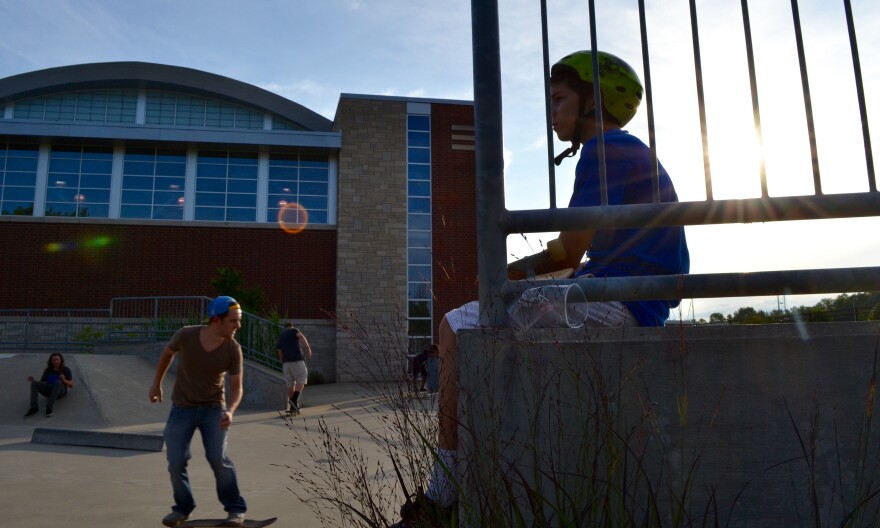Where the Monon Trail hits 126th Street in Carmel, Ind., it’s crowded with bikers and joggers. There’s a shopping center with a yoga studio and some restaurants, and two different theaters are in view.
A few hundred yards away, a jazz band plays right off the trail. There are hundreds of people out for the show, and some of them dance. Further down, there’s a community center, complete with a skate park.

Life expectancy here is nearly 84, similar to Switzerland and Japan. But just 15 miles south, in downtown Indianapolis, it drops to 69, lower than life expectancy in Iraq.
According to a report released yesterday by IUPUI’s Fairbanks School of Public Health, people in the northern part of the Indianapolis area live an average of 14 years longer than people in some inner city neighborhoods.
This gap is not unusual. The Robert Wood Johnson Foundation has documented similar differences in other cities across the U.S. Minneapolis and St. Paul, 13 years. New Orleans, 25. Washington, D.C., 7. In each, a short distance means a dramatic difference in the average number of years lived.

Tamara Leech studies neighborhood effects on population health. She and her colleagues looked at five years worth of death and population data, broke it down by ZIP code, and saw the same pattern: Life expectancy is lower in the poorer neighborhoods.
“Indianapolis is very similar to all the other cities, especially the Rust Belt cities,” she says. “What we saw was that deindustrialization contributed to concentrating poverty.”
Over the last several decades, the number of manufacturing jobs in the U.S. fell. Those who could afford it moved away to the suburbs, and the people who stayed behind were left with fewer, lower-paying jobs.
“As you see more concentrated, isolated communities, more segregation by income and race, you're going to see completely separate societies emerging,” she says. “That's what life expectancy tells us about.”
Leech says it’s impossible to pinpoint just one cause for the lower life expectancy found in poorer neighborhoods. That’s because life expectancy is a result of how a community lives. That includes factors like access to food, levels of education, and exposure to pollution and crime. All these things can affect lifespan.
We head south on the trail, toward some of the poorer neighborhoods. We stop first at 49th Street, and Leech notices a wall where the paint is starting to wear away.
“Prior to the late 1970's, any paint on that wall is leaded paint,” she says. “If it's running off into our water systems, this is going to go into the sewers.” Standing in this spot, we could be breathing lead particles, Leech says.

As we continue south toward downtown, we see fewer sidewalks and fewer people, and more and more crumbling buildings and roads. Restaurants give way to warehouses. Patches of grass become shaded alleyways.
Leech hears a siren in the distance. “Notice the sound, too, because it's noise pollution that also affects our health,” she says. Further south, she says we’ll hear more and more sirens.
In general, the further into the city you go, crime and infant mortality go up. Some of this has a direct effect on life expectancy: if a baby or young person dies from premature birth or an act of violence, those deaths bring the average down.
But living in poverty is stressful in general, and that day-to-day stress can have a cumulative effect that manifests later in life.
“[Stress] degrades you physically in a lot of ways,” says Leech. “It increases your susceptibility to a lot of chronic diseases … it plays a role in hypertension. But also for young kids, it affects neurological development.”
Stress is also linked to unhealthy habits, such as smoking and overeating, which are in turn linked to cancer, obesity and heart disease -- America’s biggest killers.

Fixing these life expectancy gaps isn’t as simple as telling people to eat better or exercise more. Leech says it will require addressing the underlying inequalities between neighborhoods.
“People in our cities are living in completely different societies, and we decide if we’re okay with that,” she says. “And if we’re not, then we have to do something and it has to be big and it’s going to take all of us.”
We say our goodbyes, and I continue down the trail to 10th Street, where life expectancy drops to 71. I get off the trail at the end, right by the highway. It smells like exhaust, and there’s not a jazz musician in sight.
Jake Harper can be reached at jharper@wfyi.org or 317-614-0482. Follow @jkhrpr.






